new posts in all blogs
Viewing: Blog Posts Tagged with: J Historical Fiction, Most Recent at Top [Help]
Results 1 - 25 of 127
How to use this Page
You are viewing the most recent posts tagged with the words: J Historical Fiction in the JacketFlap blog reader. What is a tag? Think of a tag as a keyword or category label. Tags can both help you find posts on JacketFlap.com as well as provide an easy way for you to "remember" and classify posts for later recall. Try adding a tag yourself by clicking "Add a tag" below a post's header. Scroll down through the list of Recent Posts in the left column and click on a post title that sounds interesting. You can view all posts from a specific blog by clicking the Blog name in the right column, or you can click a 'More Posts from this Blog' link in any individual post.
I Survived the Hindenburg Disaster. Lauren Tarshis. 2016. Scholastic. 112 pages. [Source: Review copy]
Scholastic has published many books in the I Survived series for middle schoolers, but, this is the first I was curious enough to pick up and read. I've seen a couple of documentaries on the Hindenburg Disaster, and, I find it a fascinating subject. The book is written from a young boy's perspective.
Our hero's name is Hugo Ballard. He is an American travelling with his family back to the U.S. His younger sister, Gertie, is very, sick--a matter of life and death. Accompanying the family--but in the cargo hold--is the family dog. Hugo meets fellow passengers, and, quite a few things happen to move the plot along BEFORE the big disaster. Most of the book is in fact "the before." Readers, of course, know that the voyage is doomed--that disaster awaits the Hindenburg.
I liked this one. I think it would be a good choice for those who perhaps may not seek out historical fiction for the sake of history... Me? I was the kid who LOVED history practically from the time I could read.
© 2016 Becky Laney of
Becky's Book Reviews

By:
Becky Laney,
on 10/8/2015
Blog:
Becky's Book Reviews
(
Login to Add to MyJacketFlap)
JacketFlap tags:
Random House,
J Historical Fiction,
J Fiction,
MG Fiction,
review copy,
mg historical,
2015,
2015 Cybils-eligible,
books reviewed in 2015,
Add a tag
My Near-Death Adventures. Alison DeCamp. 2015. Random House. 256 pages. [Source: Review copy]
While I can't easily say that I loved, loved, loved My Near-Death Adventures by Alison DeCamp, I can say--and quite easily--that I really, really liked it. Why? Because it was funny and it reminded me, in a good way, of Richard Peck. First, I do enjoy historical fiction. Historical fiction was probably my very first favorite genre before I even knew what "genre" meant. So, it doesn't take much convincing or persuading to get me to pick up historical fiction. Second, I do love to read, and, I've never been what you would ever call a reluctant reader. So my really, really liking a book doesn't mean it's right for your reluctant reader who hates history. That being said, I think there are plenty of appealing things about it.
The narrator, Stan, has a very unique, quite quirky voice. He is trouble-prone. He is always, always, always getting into trouble: whether it is actual, physical trouble, or, if he's just saying something he really should keep to himself. The book is just one comedic episode after another.
The basic plot: Stan's world is turned upside down by a recent move. Him and his mom have moved in with his aunt, uncle, and Granny, not to mention his girl-cousin, Geri. He is helping out his family by helping them cook and serve food to the lumberjacks in camp. (His job really isn't to cook so much as it is to help serve and clean up.) He doesn't particularly like wearing an apron, but, he likes even less wearing one of his granny's stockings once his own socks go missing. After all, he's recently decided that he must be a manly-manly man and be respected by one and all and recognized as a GROWN UP. But he is just eleven. And he isn't the brightest kid ever, and, you might say he's anxious and gullible, never, a good combination if you don't want to be teased by one and all. Still, despite all his mistakes--and he makes plenty--you can't help but like him.
I enjoyed the characterization. I did. Not every character is equally developed. But all of them are almost equally entertaining and/or interesting. Take, Granny, for example. She was a hoot. Not that I want her for MY granny, mind you. But still, one can't help but snicker as Stan keeps track of just "how evil" Granny is. She starts off, I believe, 99% evil, and, towards the middle, she shockingly becomes just 57% evil, I believe, but can she stay that way?! Another favorite character of mine was "Sneaky Pete" (aka Mr. McLachlan). I really, really couldn't help just LOVING him and I'm not exactly sure why. Sure, he's in plenty of scenes, but, Stan himself doesn't particularly like, trust, or respect him for most of the book. But readers--at least this reader--saw through Stan's narration and saw things as they really were. Mr. McLachlan is A GOOD GUY. And I hope that his mom gets a happy ending, she deserves it!
So the book is definitely a coming-of-age story...and it just worked for me.
© 2015 Becky Laney of
Becky's Book Reviews
Case of the Phantom Cat (Maisie HItchins #3) Holly Webb. Illustrated by Marion Lindsay. 2015. Houghton Mifflin Harcourt. 176 pages. [Source: Review copy]
I enjoyed this one, I did. But I didn't enjoy it as much as the first two books in the Maisie Hitchin's mystery series. In the third mystery, Maisie meets a new friend, Alice. Alice takes French lessons from someone who boards with Maisie's grandmother. Alice has been sick and missed a few lessons, Maisie, curious as ever, goes to visit her. This will be their first time to actually talk freely and for any length of time. Some in Alice's household take a liking to Maisie, others not so much. Her father invites Maisie, whom he has just met, and whom his daughter has just met, to accompany his daughter to the country. The two girls will be accompanied by the governess. Things could go smoothly, or, not so smoothly for everyone...but with a title like CASE OF THE PHANTOM CAT...one can guess that trouble and danger are on the way...
Alice and Maisie do indeed find an adventure at the rented country house. But it isn't necessarily a dangerous one. Maisie will solve the mystery of the spooky sounds, the white "phantom" cat, and the HORRIBLE smell in the library...
If you're already hooked to the series, this one is worth your time. If you haven't met Maisie yet, this isn't the best introduction.
© 2015 Becky Laney of
Becky's Book Reviews

By:
Becky Laney,
on 7/12/2015
Blog:
Becky's Book Reviews
(
Login to Add to MyJacketFlap)
JacketFlap tags:
family,
Newbery,
J Historical Fiction,
brothers and/or sisters,
J Fiction,
J Realistic Fiction,
children's classic,
library book,
1985,
j historical,
books reviewed in 2015,
books reread in 2015,
Add a tag
Sarah, Plain and Tall. Patricia MacLachlan. 1985. Houghton Mifflin. 64 pages. [Source: Library]
I've read Sarah, Plain and Tall several times, but, I can't find proof that I've blogged about it. So. Sarah, Plain and Tall won the Newbery in 1986. It is historical fiction for the youngest of readers.
Anna is the heroine of Sarah, Plain and Tall. Through her we meet Caleb, her brother; her father; and Sarah, the woman who may become her step-mother if all goes well. The children want this very much, a new mother.
Sarah comes to visit the family for one month. Will she come to love them? Will they come to love her? Will they belong together? Is this meant to be? Or will Sarah miss her old home and her old life too much to stay?
This is a sweet novel full of innocent longing. I loved all of the characters. There is something so simple and pure about it. Definitely recommended.
© 2015 Becky Laney of
Becky's Book Reviews
Indian Captive: The Story of Mary Jemison. Lois Lenski. 1941. HarperCollins. 298 pages. [Source: Bought]
I don't remember reading Indian Captive as a child, and that may be a good thing. I'm not sure I would have--could have--appreciated it back then. Not that the book isn't for children, but I was a sensitive reader, and this one would have proved unsettling at times. I should mention that the book is set in the 1750s and 1760s.
Indian Captive is the story of Mary Jemison. (Though she's called Molly throughout the book, I believe.) As a girl, twelve years old, if I recall, she's taken captive along with her family by Indians. The night before the capture, they'd been warned by a frantic neighbor. The neighbor was advising anyone and everyone he came into contact with to run, that danger was imminent. Would it have made a difference if he'd listened? Maybe, but, probably not. Molly is the only survivor from her family. Not that she realizes this until the end of the novel. Though the Indians captured a dozen or so people initially, at the end, it was narrowed down to two. Molly was bought (though I'm not sure if sold/bought are the right words?) by two grieving women. For better or worse, she's been adopted by the tribe, and her new life has begun. While at first she struggles to make peace with all the changes, she does eventually come to accept her new reality and to even embrace it. That doesn't mean that when she comes across a white man (or woman) that she doesn't excitedly start speaking English. But it means that she finds a way to belong and does in fact find her identity within the tribe.
Indian Captive is rich in detail. It's historical fiction that seeks to capture a way of life, a culture (Seneca). Day by day, season by season, year after year. Details are layered throughout. As an adult reader, I must admit I'm skeptical of any book from this time period with Indians as the subject. Is the portrayal of Indian life accurate? fair? insulting? offensive? My guess is that it's better than some perhaps, but, not necessarily great. © 2015 Becky Laney of
Becky's Book Reviews

By:
Becky Laney,
on 4/1/2015
Blog:
Becky's Book Reviews
(
Login to Add to MyJacketFlap)
JacketFlap tags:
Newbery,
J Historical Fiction,
J Fiction,
World War II,
mg historical fiction,
children's classic,
MG Fiction,
1989,
books reviewed in 2015,
Newbery Reading Challenge,
Add a tag
Number the Stars. Lois Lowry. 1989. (Won Newbery in 1990) 137 pages. [Source: Bought]
Number the Stars was probably one of the first fiction books I read about the Holocaust and World War II. (I know I also read The Hiding Place and The Diary of Anne Frank, but both of those are nonfiction.) What did I remember about Number the Stars after all these years? Well, I remembered that it was about a young girl who had a Jewish best friend. I remembered that the girl's family helped the friend and her family get out of Denmark. I remembered the intense scene where German soldiers come to her house looking for hidden Jews. But most of the details had faded away. So it was definitely time for me to reread.
Annemarie is the heroine of Number the Stars. I loved her. I loved her courage and loyalty. Ellen is Annemarie's best friend. I love that readers get an opportunity to see these two be friends before it gets INTENSE. I also love Annemarie's family. I do. I don't think I properly appreciated them as a child reader. One thing that resonated with me this time around was Annemarie's older sister, her place in the story. The setting. I think the book did a great job at showing what it could have been like to grow up in wartime with enemy soldiers all around. In some ways it was the little things that I loved best. For example, how Annemarie, Ellen, and Kirsti (Annemarie's little sister) play paper dolls together, how they act out stories, in this case they are acting out scenes from Gone with The Wind. I think all the little things help bring the story to life and make it feel authentic.
For a young audience, Number the Stars has a just-right approach. It is realistic enough to be fair to history. It is certainly sad in places. But it isn't dark and heavy and unbearable. The focus is on hope: there are men and women, boys and girls, who live by their beliefs and will do what is right at great risk even. Yes, there is evil in the world, but, there is also good.
© 2015 Becky Laney of
Becky's Book Reviews
By the Shores of Silver Lake. Laura Ingalls Wilder. 1939. HarperCollins. 291 pages. [Source: Library]
As a child, By The Shores of Silver Lake wasn't my favorite of the series. I blame Jack's death for that. But as an adult, I've come to appreciate By The Shores of Silver Lake more, seeing it as more than just a transition between On the Banks of Plum Creek and The Long Winter.
In By the Shores of Silver Lake:
- Mary goes blind, Laura is "asked" to be her eyes
- Pa is offered a new job, a job with the railroad, which he takes
- He goes by wagon, Jack dies BEFORE Pa's departure
- The rest of the family travels most of the way by train
- They continue the rest of their journey (a day or two or three) by wagon
- They settle in for a while, Pa talks about the claim he hopes to claim later that year or whenever his job is finished and he's able to go out seeking a claim of his own
- Pa's job isn't always safe; he's the paymaster for the railroad, and he has to calm down an angry mob in this one.
- They meet the Boast family
- They spend the winter in the 'biggest' house Laura has ever lived in
- Winter may be lonely (no neighbors, no town) but the spring will see plenty of people come and go. EVERYONE stops at their house on their way west
- The family learns that there is a school for the blind, they all decide Mary should go there.
- The family decides to claim land near De Smet, South Dakota
- Laura catches the tiniest glimpse of Almanzo Wilder's horses
I definitely am enjoying rereading these books. By The Shores of Silver Lake may not be my favorite of the series, but, I'm glad I reread it.
© 2015 Becky Laney of
Becky's Book Reviews
The Greatest Skating Race: A World War II Story from the Netherlands. Louise Borden. 2004. Illustrated by Niki Daly. Simon & Schuster. 48 pages. [Source: Library]
I enjoyed reading Louise Borden's The Greatest Skating Race. Though the book has been out for ten years, I'd not come across it before. It is a wonderful picture book for older readers. I've only read a handful of picture books with a World War II setting. I'm on the look out for more. So if you know of some, please let me know in the comments! I'll try my best to review them.
Readers meet Piet, a young Dutch boy, in The Greatest Skating Race. He loves, loves, loves to skate. It would be odd if he didn't love to skate. He loves to dream about competing in the Elfstedentocht--a famous skating race, the "Eleven Towns Race." Readers learn details about the race throughout the text. But the race itself is not what this one is about. It is about the German occupation, and the ever-increasing threat to Jews.
One day, Piet's grandfather gives him a big, big task to accompany two Jewish children across the border and to their aunt's house.
Today you must be the best skater that you can be.
You must be as brave as your father...wherever he is.
You must be as brave as Pim Mulier!
You must skate the main canal to Brugge,
straight as an arrow to its mark.
And you will need to race against today's sun
to get there before dark.
I want you to skate as fast as you can,
but you must look like an unimportant schoolboy.
You will take Johanna and Joop Winkelman
and help them find their Aunt Ingrid's house.
We think this is the safest way to escape from those
who may wish these friends of ours harm. (16)
It will be a demanding journey--physically and mentally--and perhaps a dangerous one as well. There will be soldiers and checkpoints. And they'll have to find their way to the aunt's house--a place they've never been before. So they'll have to remember the directions carefully, and not let fear confuse them.
The book is good! I'd definitely recommend it.
© 2015 Becky Laney of
Becky's Book Reviews
Chasing Freedom: The Life Journeys of Harriet Tubman and Susan B. Anthony Inspired by Historical Facts. Nikki Grimes. Illustrated by Michele Wood. 2015. [January 2015] Scholastic. 56 pages. [Source: Review copy]
First sentence:
It is 1904, a year in which the 28th Annual Convention of the New York State Suffrage Association met in Rochester, New York. On this occasion, Susan B. Anthony will introduce the guest speaker, the legendary Harriet Tubman. Historical fiction based on a what-if, the what-if being "What if Harriet Tubman and Susan B. Anthony sat down over tea to reminisce about their extraordinary lives?" While the two women certainly met--at the very least twice since they spoke at the same conferences--there is no evidence that these two were friends or good friends who would sit down and spend an hour or two in conversation sharing their lives over cups of tea.
The whole book is a dialogue between the two women taking place in 1904. Their life stories are told alternately. This worked some of the time. Other times I felt the two were not so much connecting and sharing so much as talking AT one another. Susan being so focused on telling details of her life and Harriet being so focused on telling details from her life that the two were just being polite waiting for their turn to steer the conversation back to themselves. Not every page reads that way, of course. But it sometimes did. One thing that both women seemed to have in common is an admiration almost an idolization of John Brown.
For those interested in learning the basics about these two women, this book is certainly an interesting place to start. While it is fiction, the stories they are telling are based on facts. Readers will learn a handful of things about each woman and the significance of both women in history.
I liked the layout of this one. On one side, readers get text. On the other side, readers see lovely illustrations. I loved the illustrations!!!
© 2015 Becky Laney of
Becky's Book Reviews

By:
Becky Laney,
on 1/15/2015
Blog:
Becky's Book Reviews
(
Login to Add to MyJacketFlap)
JacketFlap tags:
J Historical Fiction,
dysfunctional families,
J Fiction,
Penguin,
abuse,
2014,
MG Fiction,
library book,
mg historical,
books reviewed in 2015,
family,
bullying,
Add a tag
The Paper Cowboy. Kristin Levine. 2014. Penguin. 352 pages. [Source: Library]
"Hands up!"My best friend, Eddie Sullivan, had a newspaper rolled and pointed at me like a gun. He was only twelve, but over the summer he'd grown so much, he looked big enough to be in high school. I've yet to be disappointed by Kristin Levine's fiction. I loved, loved, loved
The Best Bad Luck I Ever Had. I loved, loved, loved
The Lions of Little Rock. I still would love to find time to reread both books. Her newest book is The Paper Cowboy. The author's note reveals much: The Best Bad Luck I Ever Had is loosely based on her maternal grandfather's memoirs; The Lions of Little Rock was inspired by her mother's childhood in Arkansas. This newest book? Well, it is based on/influenced by her father's childhood. It is set during the McCarthy era, when the threat of communist spies was very strong no matter how big or small the community.
I'm tempted to keep it brief: READ THIS. But would that do it justice? Probably not. But I don't want to give away too much either.
I love The Paper Cowboy for its humanity. It almost
aches with its humanity. There's not one perfect, flawless character within. Tommy, the protagonist, is far from perfect. In fact, he's a bit of a bully. But it's almost impossible to keep standing in judgment of Tommy once you get a glimpse of his home life. Time and time again, readers see a powerless Tommy in heartbreaking situations.
I love The Paper Cowboy for its look at family life. Every member of the family is fully developed. (Well, perhaps with the exception of the baby. Tommy's youngest sister is just three months old when the novel opens!!!) But one really gets relationships in this book. Tommy in relationship with his dad, with his mom, with his older sister, with his younger sisters. And the relationships--no matter if they're "good" or "healthy" or not-so-much, the relationships feel completely authentic. The sibling Tommy is closest to is his sister, Mary Lou, who is badly burned--an accident--near the start of the novel.
I love The Paper Cowboy for its sense of community. I loved getting to know folks in his community. Particularly, I loved his developing relationships with several adults within the community: Mr. McKenzie and Mrs Glazov, Mrs. Scully and Pa and Ma Konecky. I just came to CARE for all the characters, no matter how 'minor.' For example, Mrs. Glazov never felt 'minor' to me at all! I just LOVED, LOVED, LOVED her.
I love The Paper Cowboy for its look at friendship and school life and even bullying. I didn't "love" the book because of its examination or treatment on bullying. I wasn't seeking out a book on bullying. I certainly wasn't expecting a book on the subject of bullying told primarily from the bully's point of view. But sometimes a book just finds you, you don't have to seek it out. I do think it's interesting to consider Tommy as a whole person. Yes, at recess at his school, he can pick on his classmates and get away with it because he has a way with his teachers. But the reader sees deeper and sees beneath the surface. Yes, absolutely Tommy's actions are just WRONG. But when a character is fleshed out so completely, so thoroughly that compassion may just come easier than judgment. One friendship comes about so slowly that it deserves attention. I loved the character of Sam McKenzie.
I love The Paper Cowboy because its one that makes you feel--sometimes so much it leaves you aching. It's an emotionally intense read. There are just some TOUGH moments to witness in this coming-of-age novel.
© 2015 Becky Laney of
Becky's Book Reviews

By:
Becky Laney,
on 1/3/2015
Blog:
Becky's Book Reviews
(
Login to Add to MyJacketFlap)
JacketFlap tags:
J Historical Fiction,
J Fiction,
Scholastic,
time travel,
J Science Fiction,
review copy,
2015,
2015 Cybils-eligible,
books reviewed in 2015,
Add a tag
Rescue on the Oregon Trail. (Ranger in Time #1) Kate Messner. 2015. Scholastic. 144 pages. [Source: Review copy]
First sentence:
Sam Abbott lugged another sack of bacon to the wagon and sat down to wipe his forehead.Premise/plot: Ranger is a golden retriever who has been trained as a search and rescue dog. But he failed to graduate his training. Ranger wanted to let the humans know that in a real situation, he'd not be distracted by squirrels. But, of course, he couldn't make them get that. Thus he failed, despite his good intentions. But he's given a second chance, of sorts, when he digs up an old first-aid kit. This kit magically transports him BACK in time. Ranger suddenly finds himself in 1850 in Independence, Missouri. He finds a missing girl, Sam Abbott's sister, Amelia, and joins the Abbott family and the wagon train heading west to Oregon. On the way, Ranger will have PLENTY of opportunities to alert Sam and his family--really, the whole wagon train--of dangers on the trail. He proves himself trustworthy when it counts.
My thoughts: It's the first in a new series. I liked this one. I did. You do have to suspend your disbelief a bit, I admit. But once you do, it's just FUN. Time travel can be great fun after all. Readers learn facts about the Oregon trail AND meet a lovable dog. And since this is the first book in the series. Readers shouldn't worry about this dog-on-the-cover book. The book realistically portrays the dangers of trail life, but, not at the expense of the star of the book: Ranger.
Rescue on the Oregon Trail releases this month. And the second in the series, Danger in Ancient Rome, will release this summer.
© 2015 Becky Laney of
Becky's Book Reviews
Goodnight, Mr. Tom. Michelle Magorian. 1981. HarperCollins. 320 pages. [Source: Library]
"Yes," said Tom bluntly, on opening the front door. "What d'you want?"A harassed middle-aged woman in a green coat and felt hat stood on his step. He glanced at the armband on her sleeve. She gave him an awkward smile."I'm the Billeting Officer for this area," she bagan."Oh yes, and what's that got to do wi' me?"She flushed slightly. "Well, Mr., Mr...""Oakley. Thomas Oakley.""Ah, thank you, Mr Oakley." She paused and took a deep breath. "Mr Oakley with the declaration of war imminent..."Tom waved his hand. "I knows all that. Git to the point. What d'you want?" He noticed a small boy at her side."It's him I've come about," she said. "I'm on my way to your village hall with the others." Read this book. Read it. At the very least, you should consider watching the movie adaptation. I doubt you regret meeting Willie Beech and Tom Oakley.
Goodnight Mister Tom is set during the early months of World War II. For the most part, it is set in the English countryside. William (Willie) Beech is one of many children being evacuated to the country for safety reasons. Willie has been assigned to a widower, Tom Oakley. Willie isn't quite sure what to think about his new home? Everything in the country seems to surprise him including Tom's dog, Sammy. Tom isn't quite sure what to think about Willie either. He's a bit puzzled because Willie does act a bit off. It's not just the fact that he's never been out of the city. Willie doesn't know how to read or write even though he's almost nine. (He also wets the bed.)
Tom soon learns enough to get him good and angry. Willie arrives essentially with nothing but the clothes he has on. But his mom has included a belt with a note on how and when to use it on her son. Tom soon sees the evidence of abuse for himself.
It was oh-so-easy to care for the characters, especially Tom and Willie. As Willie spends time in the country, it is in many ways his first taste of safety and freedom. And love and kindness. And stability. And friendship. I loved seeing Tom with Willie. I loved his patience and firmness. I loved his kindness and encouragement. I loved seeing Tom work with Willie on his writing and reading. I loved seeing them read together every day. I loved seeing Tom encourage Willie with his drawing.
Willie also finds friends his own age. His best, best friend is a Jewish boy named Zach. Plenty of time is spent with Willie and Zach and their other friends and/or classmates.
The novel is both intense and ultimately satisfying. It it intense for multiple reasons. I expected it to be intense because of the war. And it was. I wasn't necessarily expecting it to be intense for psychological reasons. The novel is ultimately satisfying, but, don't expect sweet scene after sweet scene. The sweetness is found in friendship and hope, but, there are some bitter shocks as well.
I loved this one. I did. I loved, loved, loved the characters. I am so glad I read this one.
© 2014 Becky Laney of
Becky's Book Reviews
The Actual & Truthful Adventures of Becky Thatcher. Jessica Lawson. 2014. Simon & Schuster. 224 pages. [Source: Library]
I was surprised by how much I LOVED The Actual & Truthful Adventures of Becky Thatcher. I think the timing was just right for me to love it.
Becky Thatcher is new in town. Her father is a judge. Her mother is a mess. To be fair, her mother is grieving the loss of her son, Jon. Becky and her father miss him too, of course. But. Her mother is deeply stuck in a very dark and melancholy place. Becky has her own way of dealing with her loss. For one, she likes to put on her brother's clothes, take him with her, if you will, and have lots of adventures. She wants to see everything, do everything, just take in each and every moment. It's not that she is out to break all the rules for the sake of breaking every rule. It's that she doesn't want to stop living and having adventures. So. She's sneaking out of the house and going off exploring and adventuring without the knowledge of either parent. Which means that her neighbor that oh-so-horrible Tom Sawyer can tattle on her often. And he does. He is a big tattle-tale which makes him about the least popular kid in town. If there's one kid you can count on to be far away from trouble, it's Tom Sawyer.
So the novel is her adventures, her coming-of-age story. One of the people she meets is Samuel Clemens. He's a riverboat captain temporarily stranded in their small town. He oversees the adventures and misadventures of all the kids in town.
I liked this one. I think I even LOVED it.
© 2014 Becky Laney of
Becky's Book Reviews
Kate's Story, 1914. (Secrets of the Manor #2) Adele Whitby. 2014. Simon & Schuster. 160 pages. [Source: Library]I ended up reading the second book first in this series, Secrets of the Manor. But I do plan on going ahead and reading Beth's Story, 1914.
Beth and Kate are cousins. Kate is American. Beth is English. Beth is slightly older apparently. On her twelfth birthday, she received a super special heirloom necklace from her great-grandmother, I believe. Kate will be receiving her own super-special necklace on her twelfth birthday. Beth has traveled all the way across the ocean to be there! Well, her visit is to be for six to eight weeks or so. Was. But this is the summer of 1914. And things get tense after the assassination.
This book is all about the two girls, two cousins, meeting each other for the very first time. Kate has been waiting years and years to meet her cousin. She's beyond ecstatic to spend time with her. They've only corresponded before this. Beth seems just as enthusiastic to be best friends.
Secrets. These two thrive on secrets. The whole premise of the series is on secrets!
I liked this one. I will definitely go back and read the first book!
Beth's Story, 1914. (Secrets of the Manor #1) Adele Whitby. 2014. Simon & Schuster. 160 pages. [Source: Library]Secrets of the Manor is a new historical fiction series by Adele Whitby. The first book in the series is Beth's Story, 1914. The book introduces readers to Beth and her family. Readers learn that Beth is from a well-to-do family. When the novel opens, Beth is several days away from her twelfth birthday. Her twelfth birthday is apparently the most exciting, thrilling, wonderful thing ever. For that is the day she'll receive the Elizabeth necklace, an heirloom necklace worn by every Elizabeth in the family. The is also a Katherine necklace. Beth's cousin Kate, who lives in America, will receive her heirloom necklace on her twelfth birthday in a few months.
For Beth's birthday, her French cousin Gabrielle (15) and her maid Helena come to stay with the family. Beth really really wants her cousin to be a good friend. She's very eager to make a connection with her older cousin. Her older cousin, however, can barely conceal her indifference to Beth. Gabrielle is definitely the villain in this one!
Secrets. Beth discovers that her family has secrets. She takes her first steps to finding out what there is to know. Readers won't learn all the secrets in this first book of course!
© 2014 Becky Laney of
Becky's Book Reviews
Behave Yourself, Bethany Brant. Patricia Beatty. 1986. HarperCollins. 160 pages. [Source: Bought.]
I acquired Behave Yourself, Bethany Brant from the library book sale a few years ago. Bethany Brant, the heroine, is a preacher's kid. The book is set near the turn of the twentieth century. And it's set in Texas. It felt like it could be a very good fit for me. Unfortunately, it wasn't quite what I expected it to be.
The book opens with Bethany Brant visiting a fortune teller at a fair or carnival. Her parents are busy listening to live music; her brother, Abel, is off on his own. Bethany knows her parents wouldn't approve of her visiting a fortune teller, of her wasting her money on such a thing, of her giving so much of her time and thought to what the fortune teller says. But. Bethany Brant does, at least on this occasion, exactly what she wants.
The entire book is centered around what the fortune teller said. She was told at least three specific things: something bad was going to happen, there were elephants in her future, and that a one-eyed man would befriend her in her greatest need.
The book chronicles Bethany through all three "prophecies" (for lack of a better word.) It follows her for almost two years. A lot does happen to turn Bethany's world upside down. And in many ways, the book is just your average coming-of-age story.
I liked this one. But I certainly didn't love it.
© 2014 Becky Laney of
Becky's Book Reviews
Preacher's Boy. Katherine Paterson. 1999/2013. Houghton Mifflin Harcourt. 176 pages. [Source: Review copy]
Is the end near?! That's the question Robbie Hewitt faces in Katherine Paterson's Preacher's Boy. The year is 1899. The novel follows the troubles of one mischievous boy, our narrator, Robbie. Well, what can one say about him? If you've read Tom Sawyer, you know EXACTLY what kind of boy he is. He's always getting IN and OUT of trouble. Since it seems impossible to stay mad at him, I suppose, you could call him charming too. How much trouble can a boy get into in one year?! Quite a bit.
Robbie likes pranks, and this book tells about several of them. Readers know what to expect from Robbie from the very start:
"On Decoration Day, while everyone else in town was at the cemetery decorating the graves of our Glorious War Dead, Willie Beaner and me, Robert Burns Hewitt, took Mabel Cramm's bloomers and run them up the flagpole in front of the town hall. That was the beginning of all my troubles. It wasn't that we got caught. In fact, I've often thought since that would have been the best thing in the world."
One of the stories in this novel is that Robbie becomes worried about "the end of the world." He isn't worried about where he'll end up. He's not sure there is a heaven or a hell. But. He is worried about missing out on LIFE. He makes a list of ALL the things he wants to do BEFORE THE END. It's a dreamer's list, in many ways, but that is part of the charm. For example, he knows it would be RIDICULOUS to write down OWN AN AUTOMOBILE. But he can't stop himself from writing down RIDING IN AN AUTOMOBILE.
This one has some interesting characters. I wouldn't ever say this one lacks plot, and by "plot" I mean ACTION. But to me the charm of this one is in the characters themselves. I liked Robbie. I liked seeing Robbie struggle. I liked seeing tension in his relationship with Elliot, his older brother with special needs. Robbie LOVES his brother, but, he doesn't always LIKE him. He struggles with his place in the family. It isn't just that his father is the preacher and EVERYONE in town watches him and judges him. It is that he feels out of sorts in his family. He feels Elliot gets all the attention, all the love and support. I thought most of Robbie's family was well-drawn. I liked getting to know Robbie, his dad, and Elliot. (I can't say that his mother and sisters came into the story much.) Robbie was also challenged a bit when he met a strange-but-bossy girl with problems of her own.
I liked the setting. I liked the writing. I liked the characters. Overall, I'd definitely recommend this historical coming-of-age novel.
© 2014 Becky Laney of
Becky's Book Reviews
A Long Way From Chicago. Richard Peck. 1998. Penguin. 148 pages. [Source: Library book]
A Long Way From Chicago has a great premise. Joey Dowdel and his younger sister, Mary Alice, are "forced" to visit their Grandma Dowdel every summer. Each chapter in the novel tells the story of a summer visit. There is a story for 1929, 1930, 1931, 1932, 1933, 1934, 1935, and 1942. The prologue says it all, "As the years went by, though, Mary Alice and I grew up, and though Grandma never changed, we'd seem to see a different woman every summer."
Through the stories, readers catch glimpses of the past. These stories capture family moments. There is plenty of humor and a good bit of heart.
For any reader who enjoys quirky small-town, long-ago, family-based stories from the heart, this one is a must.
I think I prefer Peck's more traditional novels to his stories.I loved this one the first time I read and reviewed it in 2008. © 2014 Becky Laney of
Becky's Book Reviews
P.S. Be Eleven. Rita Williams-Garcia. 2013. HarperCollins. 274 pages. [Source: Library]
In One Crazy Summer, readers met three sisters: Delphine, Vonetta, and Fern. P.S. Be Eleven is the sequel to the award-winning One Crazy Summer. The novel opens with the three girls on their way home from their summer trip. Yes, the events pick up just where the last book left off.
P.S. Be Eleven captures their adventures and misadventures in New York as the girls settle back down for another school year. It won't exactly be a calm year either. Their uncle is coming back home from Vietnam, for example, and their own father is getting married. By the end of the book, even more has changed for these young girls. (But I won't spoil it!) But perhaps the one oh-so-pleasant happening of the novel is the girls introduction to the Jackson Five. These sisters hear from a friend that they just HAVE to watch this new oh-so-awesome group perform on a TV show. They risk the wrath of their grandmother to turn on the TV after their bedtime--she's asleep too. But. I'm guessing each would tell you it was worth it. These three become obsessed with the Jackson Five, and they dream of seeing them in concert. An opportunity arises, something that adds a bit of structure to these adventures, but will they get their happily ever after?
I never knew how much a sequel was needed until I read P.S. Be Eleven. I was perfectly content with One Crazy Summer, and yet, after spending more time with these three sisters, well, it was just right, just perfect to go back and revisit them in their comfort zone. The book has a great feel to it.
P.S. Be Eleven was a great experience. I definitely connected with the characters. I knew this to be true when I found myself getting angry--in some cases really angry--with certain situations and events. I found that I really cared deeply about these sisters. I thought the setting was enjoyable, and their obsession with the Jackson Five was great! It was a thoughtful read, as well.
© 2014 Becky Laney of
Becky's Book Reviews
Every Day After. Laura Golden. 2013. Random House. 224 pages. [Source: Review Copy]
I loved, loved, loved Every Day After by Laura Golden. I love it not because the characters are oh-so-perfect. I love it because the characters are oh-so-human. Our heroine, Lizzie Hawkins, is flawed but lovable. Every Day After is her coming-of-age story, and it's a great one.
Every Day After is set in the early 1930s. Lizzie's father recently abandoned his family because he knew that they were about to lose their house. In addition, her mother has not been the same since he left. She has checked out mentally and emotionally. She has lost touch with reality.
Lizzie doesn't know why her father left; she even hopes that he will come back and save them all. But Lizzie is determined to be strong and brave and resourceful until then. She will take care of her mother. She will not let her mother be put into a mental hospital. She will not let the authorities put her into an orphanage.
Her father had a simple rule: never, ever accept charity. To ask for help is to show weakness, and weakness is to be despised. But does Lizzie have to be strong in the same way as her Dad?
Lizzie may feel she has to do it alone. But there are people in her life who do care.
Lizzie has a best friend, Ben, and a worst enemy, Erin. It drives Lizzie crazy that Ben doesn't hate Erin too. That Ben actually treats Erin with kindness and respect. She thinks that because Erin treats her awful, bullies and teases her, that Ben should hate Erin on principle. But it is not in Ben's nature to HATE anyone. He is gentle and sensitive and compassionate. He sees what Lizzie absolutely cannot: that Erin is in tremendous emotional pain. I loved the themes of this novel. How Lizzie "grew" through the novel, how she learned about life, love, friendship, and family.
What I loved the most about Every Day After was the characterization and the writing. I CARED DEEPLY about the characters. Some scenes were very intense and uncomfortable because I felt so much. I adored Ben!!!
© 2013 Becky Laney of
Becky's Book Reviews

By:
Becky Laney,
on 4/22/2013
Blog:
Becky's Book Reviews
(
Login to Add to MyJacketFlap)
JacketFlap tags:
YA Fiction,
YA Historical Fiction,
YA Fantasy,
J Historical Fiction,
J Fiction,
J Fantasy,
2012,
Penguin USA,
library book,
books reviewed in 2013,
Add a tag
Chronicles of Egg #1: Deadweather and Sunrise. Geoff Rodkey. 2012. Penguin. 288 pages.
What I enjoyed most in Geoff Rodkey's novel, Deadweather and Sunrise, (the first in the Chronicles of Egg series) was the writing or storytelling. For example, I loved how this pirate-adventure (set in an alternate--though at times familiar--world) began:
"Nobody lived on Deadweather but us and the pirates. It wasn't hard to understand why. For one thing, the weather was atrocious. Eleven months out of twelve, it was brutally hot and humid, with no wind at all, so on a bad day the air felt like a hot, soggy blanket smothering you from all sides. And the other month was September, which meant hurricanes. Then there was the volcano. It hadn't actually blown in ages, but it belched smoke and shook the earth enough to scare away anybody who might've overlooked the pirates and the weather."
There are plenty of descriptive details in this coming-of-age adventure quest.
Egbert (Egg) is often mistreated by his immediate family (his father and older brothers). Kindness and compassion being foreign concepts to him. He's only known one way of being treated, only one way of "being" or "belonging" in a family. So when life as he knows it changes dramatically, he's at a loss. His ENTIRE family went up in a hot-air balloon, never to return. They are presumed dead after several weeks of presumed searching. The man who takes Egg into his own home and introduces him to his own family has layers of secrets as Egg discovers. There is one person that Egg comes to love dearly during his stay. The daughter, Millicent. She's an interesting character, in a way. And I appreciated her perhaps a little more than the other sidekick, Guts.
If you enjoy action-adventure stories with secrets, mysteries, pirates, and an ultimate hunt for treasure, then this may be a good match.
© 2013 Becky Laney of
Becky's Book Reviews
Little House on the Prairie. Laura Ingalls Wilder. 1935. 335 pages.
Little House on the Prairie is such a dramatic read, especially when compared with the first in the series, Little House in the Big Woods. The first half of the novel focuses on the Ingalls family journeying to Kansas (Indian Territory). It's a trip filled with MANY dangers. (When Jack becomes lost in the river and the worst is feared, well, it's hard to handle.) Even after they settle into their new place, things stay messy. At one point, the whole family becomes horribly ill, all at the same time. If not for kind neighbors (distant neighbors) checking on them because the illness is widespread, then they might all have died.
Their new home doesn't ever quite feel like home, doesn't feel right. And as tensions between white settlers and the Native Americans increase with each chapter, it's upsetting. It's quite a relief, in a way, to see them [the Ingalls] go.
If I were to judge the entire series by this one book, I'm not sure the series would be among my favorites. While there was a happy peacefulness to the first novel, this book is anxious, dramatic, full of tension and uncertainty. There isn't the assurance that everything will always work out well. (Though that could be Laura as the narrator growing up a little.) I think the novel does a good job showing Laura's unease. Laura is thoughtful and curious--at times--always observant. That doesn't mean Laura is wise or always right. (In one instance, if Laura had done what she
felt to be right, things would have gone very, very wrong.)
Of course one of the main conflicts of the book is the tension between the white settlers and the Native Americans. The way that it is presented while historically accurate and socially acceptable for the times (both the 1870s and the 1930s) can prove problematic for modern readers. My first review
covers this aspect of the novel. Little House on the Prairie is not the only problem novel from the time period. Not all books in the series are equally offensive.
© 2013 Becky Laney of
Becky's Book Reviews

By:
Becky Laney,
on 4/10/2013
Blog:
Becky's Book Reviews
(
Login to Add to MyJacketFlap)
JacketFlap tags:
favorite books,
J Fiction,
favorite authors,
children's classic,
book I own,
books reviewed in 2013,
1932,
j historical,
J Historical Fiction,
Add a tag
Little House in the Big Woods. Laura Ingalls Wilder. 1932. 238 pages.
It's been almost five years since I last read the Little House books by Laura Ingalls Wilder. These are pure comfort reads. Though not every single book in the series is equally satisfying. I've never finished Farmer Boy, for example.
Little House in the Big Woods is an enjoyable, nostalgic read celebrating "the good life" of a young family. It is a way of life being celebrated or remembered. The focus is just on much on
how Ma and Pa used to do things, as it is on the characters themselves.
Attention and detail given to preparing for all seasons of the year, washing, cleaning, cooking, baking, hunting, storing and saving for winter months, celebrating with family and extended family, etc. In the first chapter alone, the reader learns the joys of smoking venison and playing with a pigs' bladder not to mention the how-to's of making head cheese. Each episode, each observation offers the reader a window into the past. Some things have changed--and changed a lot--other things have remained the same. One of the things that resonates in this book--in this series is the love and joy of family life. Pa. Ma. Mary. Laura. Carrie. Each are part of the family. Each are important, valued, loved. The relationship of Laura with her parents and Laura with her sisters and Laura with her beloved dog, Jack, are timeless.
© 2013 Becky Laney of
Becky's Book Reviews
Invention of Hugo Cabret. Brian Selznick. 2007. Scholastic. 525 pages.
I hadn't really planned on rereading
Brian Selznick's Invention of Hugo Cabret, but this year I joined the book to movie challenge. I'd been curious about the film, Hugo. This "review" will share what I thought about both the book and the movie.

I found the movie wonderful. I found it very compelling. I was drawn into the story--the time and place. This is a movie (and a book) where setting is just as important if not MORE important than the characters. Because it is set in a train station in Paris, France, in the early 1930s, because it focuses on such an intriguing orphan who is desperate to make sense of the world and fix what needs fixing, because it was a story with such a strong emphasis on friendship and making your own family, it worked for me. The book and the movie are different from one another. The movie adds characters and even gives them story-lines. The movie changes some of the relationships as well. But I thought some of the changes--at least--worked better. I liked the Hugo of the movie better than the Hugo of the book! While the novel's focus on old cinema was interesting, on film it meant SO MUCH MORE. This book was meant
to be filmed.
I originally read the book in 2007. I watched the movie a few weeks ago and then decided to reread the book. I definitely preferred the movie to the book. But the book is a very quick read! It takes longer to watch the movie than it does to read the book!
© 2013 Becky Laney of
Becky's Book Reviews
Party Shoes. Noel Streatfeild. 1946. Oxford Children's Classics. 320 pages.
Party Shoes isn't quite what I expected it to be. It started out with great promise, I thought. We meet Selina, a girl living with her British cousins through the war (World War II). One day she receives a present from her American godmother. The parcel contains a beautiful (though inappropriate for the times) dress or 'frock' and some lovely shoes. Selina knows, as do her cousins and aunt and uncle that there will never be a suitable occasion for her to wear the dress and shoes. Not with the war on, not with the economy being what it is, not with shortages and restrictions, etc. So the cousins have a meeting. Every person has to suggest at least one idea of how Selina can wear her dress and shoes before she outgrows them. After many ideas are presented, everyone concludes that they will have a pageant on the neighbor's lawn. They set the date for September 20, 1945. And then they each begin writing their piece.
Selina does learn through the process that she is more capable than she ever thought, that she can do things, that she is good at many things, that she is great with working with people, solving problems, etc.
Over half the book is focused on the tiny details of the pageant, each scene of the pageant. We're there for what feels like three hundred rehearsals. Of course, that's not really the case. Probably more like forty. But still. As their scenes are changed, arranged, rearranged, scripted, directed, etc. I found most of the book tedious. I didn't want it to be tedious. I wanted it to be a delight. But most of the delight happened in the first hundred pages.
Read Party Shoes
- If you like Noel Streatfeild
- If you like reading about creativity, drama, etc. (writing poetry, dancing ballet, acting/directing drama, etc.)
- If you like historical fiction set during this time period (1944-1945)
© 2013 Becky Laney of
Becky's Book Reviews

By:
Becky Laney,
on 12/26/2012
Blog:
Becky's Book Reviews
(
Login to Add to MyJacketFlap)
JacketFlap tags:
2010,
1982,
review copy,
Books reviewed in 2012,
war,
J Historical Fiction,
J Fiction,
Scholastic,
World War I,
Add a tag
War Horse. Michael Morpurgo. 1982/2010. Scholastic. 176 pages. This one surprised me. I didn't expect it to be so good, so compelling. After all, I don't "like" horse books. But. This little book is narrated by a horse named Joey. We get a glimpse of his life before--before he became a war horse, sent to Europe as part of a cavalry unit of British soldiers. We meet the son of his first owner, Albert, a boy who LOVES him oh-so-much, a boy who would do just about anything and everything for "his" horse. Joey is sold to the army because of the family's need for money. Albert is distressed, and Joey has to adapt for better or worse. But life does go on...readers get a glimpse of World War I as seen through the eyes of a horse. And it is an ugly, ugly mess. But the book, as a whole, is not as depressing as it might have been. That's not to say it's a cheerful book, but, it has many redeeming qualities. I love Joey's resilience; I love Albert's determination. There are some sad, brutal moments, but, it felt genuine and authentic--not manipulative.Read War Horse- If you like horse books
- If you don't like horse books
- If you like historical fiction set around World War I
© 2012 Becky Laney of
Becky's Book Reviews
View Next 25 Posts



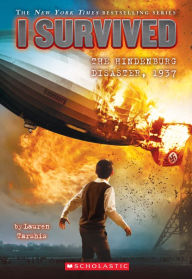


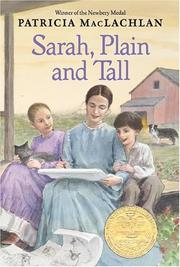

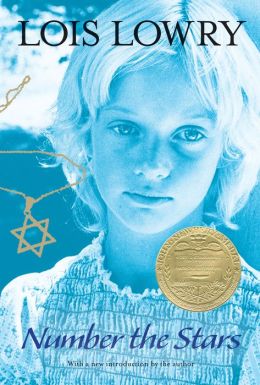


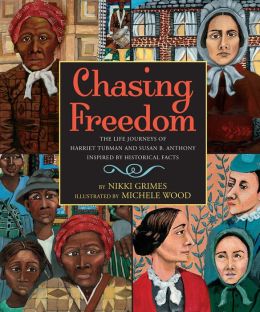
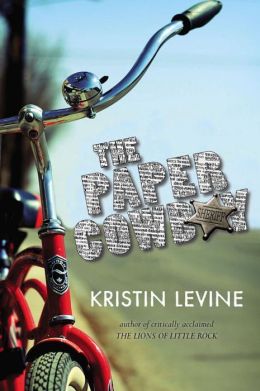
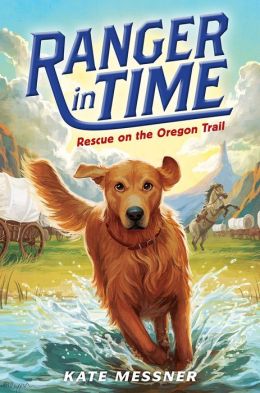

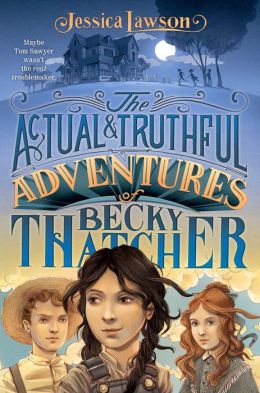

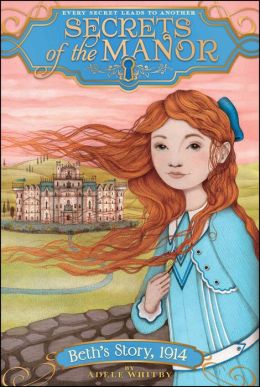

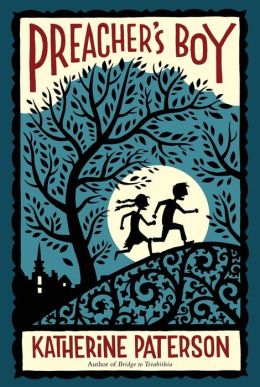
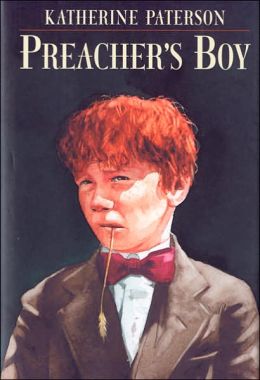
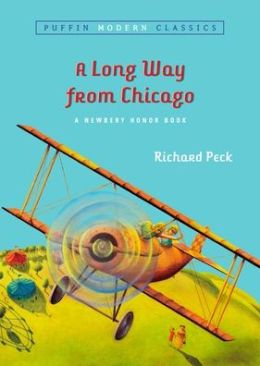

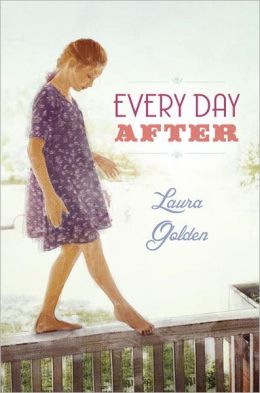
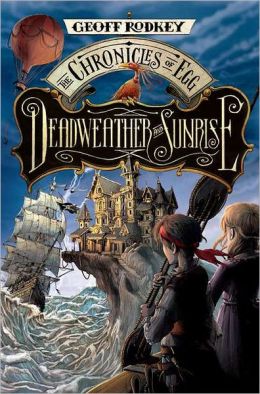
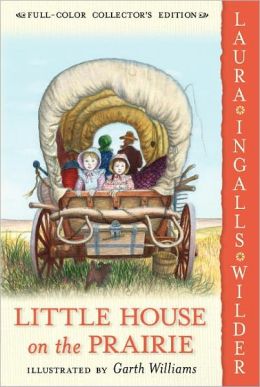



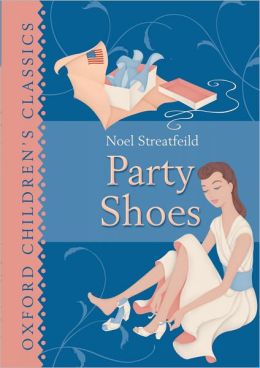
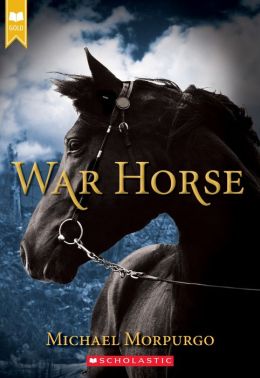
For more reviews visit:
https://www.amazon.com/dp/0743273567/ref=as_li_tf_til?tag=httpblbooksbl-20&camp=0&creative=0&linkCode=as1&creativeASIN=0743273567&adid=1H6Q0CFKR68ESAHPDPMC&
For more reviews visit:
https://www.amazon.com/dp/0743273567/ref=as_li_tf_til?tag=httpblbooksbl-20&camp=0&creative=0&linkCode=as1&creativeASIN=0743273567&adid=1H6Q0CFKR68ESAHPDPMC&